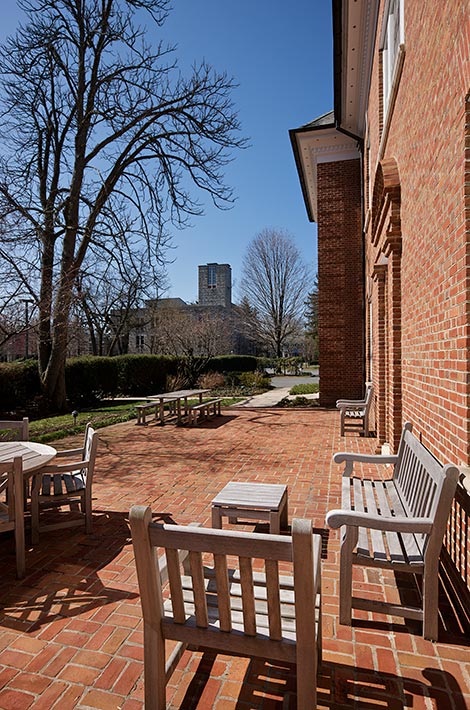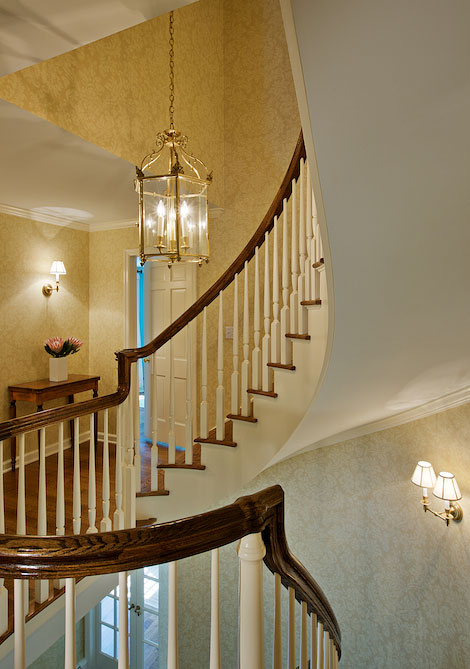It’s no secret that the Canon 1Ds Mark III with its 21mp sensor challenges wide angle lenses. It’s no secret too that Canon does not have the best reputation when it comes to wide angle lenses. I don’t know how deserved that rep is. I shot with Nikon for close to 15 years ending the run with the D1 and then the D1x. I ran into some of the same issues with Nikon wides that I see now with some of the Canon wides.
When I switched to Canon it was to the 1Ds and then the 1Ds Mark II. With both cameras, I used the Canon 16-35 f2.8 L lens and it worked very well. On architecture assignments I would use all three of Canon’s tilt/shift lenses and if I had to go wider than 24mm the 16-35 was used. Stopped down, it worked fine even on the widest end of the zoom range. Then the 1Ds Mark III came along… With it I found my 16-35 was very soft and mushy, almost smeared looking, in the corners; an effect that never completely dissipated as I stopped down or zoomed in. What to do?
Options within Canon include the 16-35 Mark II lens (a new version of the lens mentioned above) and the Canon 14mm Mark II lens. Outside of Canon people rave about the vintage Contax 21mm lens, the Nikon 14-24 zoom lens and Zeiss has just announced a new 18mm lens (Nikon Mount). The non-Canon lenses would all require adapters to be mated to the Canon body.
I did my research and quickly came to the conclusion that the vintage Contax 21mm and the Nikon 14-24 were not options I wanted to pursue. The Contax 21mm is no longer made and it runs close to $3000 used. Samples I’ve seen from it are promising but it suffers from mustache shaped distortion along the top of the frame. While this might be acceptable in landscape photography it would be an issue in architecture photography. It’s also prone to significant flare. Given that the only way to test it would be buy it used and then have to re-sell it if I didn’t like it – it was too risky.
The new Nikon 14-24 I viewed as too risky as well. It’s a Nikon “G” lens so it has no aperture ring. There is one web site that reviews and compares many of these lenses, 16-9.net, and they make a Nikon G to Canon adapter. Many buyers have waited months to get the adapters from 16-9 and I’ve seen no independent review as to the build quality of the adapter. It may be fine and the adapters may be shipping now but again, in my view, too risky for professional use. Looking at the Nikon 14-24, which has garnered praise across the board, it’s a very different beast from the Canon 16-35 Mark II and the Canon 14 Mark II lenses. It’s large and has a bulbous front element typical of fish-eye lenses from days gone by. Lastly, I didn’t see a big difference between the Nikon 14-24 and the Canon 14 Mark II in 16-9.net’s tests when both lenses are stopped down.
The Canon 14mm f2.8 Mark II Lens
In use this Canon lens has proven to be a stellar performer. It’s extremely sharp, has very little distortion and little chromatic aberration. I find that I rarely need to correct for chromatic aberration. The lens is also small, compact and solid. It’s a very nice lens to shoot with. In testing the focus accuracy, I found that it needed no microadjustment in the Canon 1Ds Mark III body. In a way, its only problem is that it’s a 14mm lens. Useful when you need very very wide but the gap between 14mm and 24mm is huge. At first I thought I might use the 14mm and crop in to equal 18mm-21mm but I just don’t shoot that way.
The Canon 16-35 f2.8 Mark II Lens
This lens is interesting. It is better than the Mark I version but I’ve found that it does have its limits on the 1Ds Mark III. You need to test and then stay within those limits. I determined the lens did need a microadjustment in the Canon 1Ds Mark III body of +7. This was the case on both my camera bodies. The adjustment helped noticeably with the overall sharpness of the lens. I also found that the lens was still wanting from 16mm~19mm especially when shooting architecture. It improves as you zoom in and from 20mm on it performs quite nicely.
So, when shooting architecture and needing to use a lens wider than 24mm the 16-35 Mark II is now my 20mm lens and if I need to go even wider I use the 14mm Mark II lens.
My hope is that Canon will come out with a new prime lens in the 18mm-21mm range of the same quality as the 14mm Mark II lens. It’s a gap in their line up they need to fill. It would also be great to see an updated version of the 24mm Tilt/shift lens. The current lens is an older design, it does just fine even on the 1Ds Mark III, but it’s never been the sharpest lens in the world. It’s got room for improvement.
Mentioned above, Zeiss has announced a new 18mm lens in the Nikon mount. It’s not a Nikon G type lens. If this lens proves to be worthy then it could easily be mounted on a Canon body and it could fill the gap between 14mm and 24mm, especially if Canon offers no new prime in that range.
I’ve already posted a few photos from the 14mm Mark II lens on the blog. My web site now has bigger versions of two of those images:
http://www.jonroemer.com/arch_recent/arch_rec07.html
http://www.jonroemer.com/arch_recent/arch_rec13.html
An image shot with the 16-35 Mark II lens at 20mm on the 1Ds Mark III:
An image shot with the 16-35 Mark II lens at 21mm on the 1Ds Mark III:

